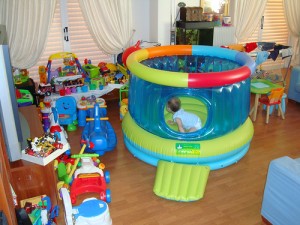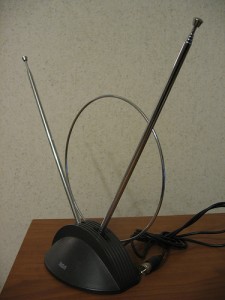 When Tony and I were planning our move to North Carolina over two years ago, we had to make a very difficult decision about transportation. At the time, we each drove an older, used car. Both of our cars were doing okay at the time, but they had over 100,000 miles on them. We knew it was only a matter of time before we started having car problems, and we didn’t want it to happen after we moved.
When Tony and I were planning our move to North Carolina over two years ago, we had to make a very difficult decision about transportation. At the time, we each drove an older, used car. Both of our cars were doing okay at the time, but they had over 100,000 miles on them. We knew it was only a matter of time before we started having car problems, and we didn’t want it to happen after we moved.
We made the decision to share one reliable car instead of having two older, used cars. Our decision dictated a lot of the lifestyle decisions we made as we planned our move. We found an apartment close to campus so Tony could take a shuttle to class, invested in a AAA membership to ensure that we’d have access to towing and roadside assistance, and chose a new car with a 10 year, 100,000 mile warranty to ensure that our car would be reliable for as long as possible.
It’s worked out extremely well for us. Here’s a rough estimate of the money we save by sharing a car:
- Car payment: $250 a month
- Car insurance: $50-$85 a month
- Gas: $50-$75 a month
- Registration/taxes: $150 a year
- Oil changes: $60 a year
- Tires: $400 every two years or $200 a year
It’s really amazing how much you can spend on owning a car, and most people never even consider if they could live with just one. Depending on your situation, it may be easier than you think. Here are some things to think about if you’re considering life with one vehicle:
How “walkable” is your neighborhood?
Do you live hear a grocery store, library, and other places you need to go regularly? You can get your neighborhood’s “walk score” to determine how close you are to these places. If you’re living somewhere with a low walk score, making a move to a more walkable neighborhood and downsizing to one vehicle could save you quite a bit of money.
Is public transportation a possibility for you or your spouse?
Take a look at your city’s bus schedule and map to see if either of you could commute to and from work using public transportation.
What about carpooling?
Ask around at your job to see if anyone lives in your neighborhood or drives through it on their way into the office. You might be able to throw in some money for gas and ride with them. If carpooling with co-workers isn’t possible, consider a service like erideshare.com or carpoolconnect.com to find other carpoolers around you.
What’s your schedule?
Do you and your spouse have work schedules that would allow one of you to drop the other one off on the way to work? This is sometimes what Tony and I do if he needs the car for some reason during the day. I’m working all day, so the car would just be sitting in the parking lot at my office anyway. It’s no problem for him to drop me off, run his errands, and pick me up in the evening.
Be careful, though.
If you decide to downsize to one car, proper maintenance becomes even more important. Consider lowering your insurance deductible if you don’t have a healthy emergency fund, keep up with regular maintenance like oil changes and tire rotations, and look into adding car rental to your insurance plan to make sure you won’t be stranded in the event of an accident.
Whatever you do, don’t write it off as impossible without considering your options. There are a ton of financial, environmental, and health benefits to becoming a one-car household. With a little planning, organization, and lifestyle shifting, it might be easier for you than you think.
 Every New Year, I’ve thought long and hard about how to improve myself, and I come up with resolutions that will make me a better person. I tell myself, “You didn’t work out enough this year,” or “You need to lose weight,” or “You need to do this and that to be better.” But you know what? This type of thinking doesn’t motivate me. It just leaves me feeling like I’ve failed in the past, and sets me up for failure and more negative thinking in the future.
Every New Year, I’ve thought long and hard about how to improve myself, and I come up with resolutions that will make me a better person. I tell myself, “You didn’t work out enough this year,” or “You need to lose weight,” or “You need to do this and that to be better.” But you know what? This type of thinking doesn’t motivate me. It just leaves me feeling like I’ve failed in the past, and sets me up for failure and more negative thinking in the future.






